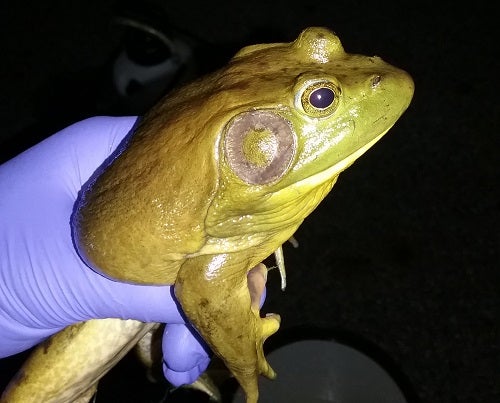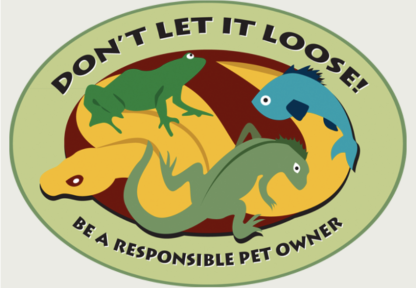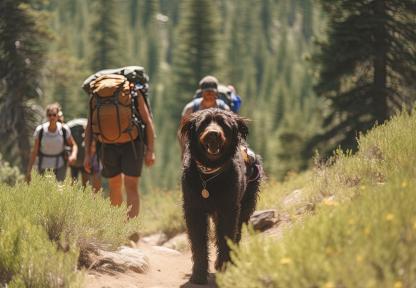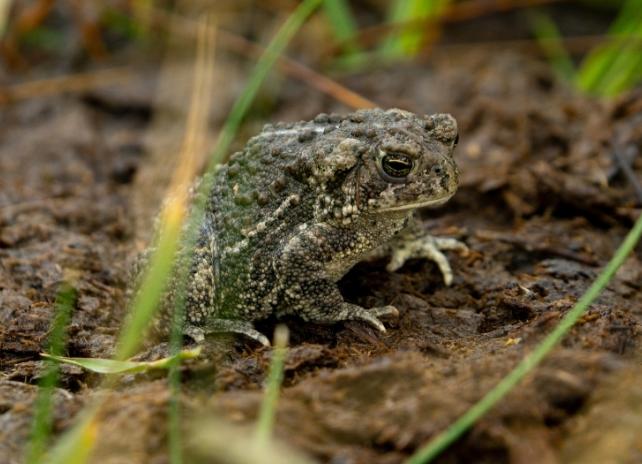The statewide herpetological coordinator manages the state’s native amphibian and reptile species in collaboration with regional fisheries biologists. Although much of the focus is on the 33 Species of Greatest Conservation Need, surveys also continue to improve our understanding of what species occur in the state and where. The Wyoming Game and Fish Department works with many partners to improve our understanding of the state’s amphibians and reptiles and to provide educational resources concerning these oftentimes poorly understood species.
Amphibians and Reptiles in Wyoming
Full species lists are available for amphibians and reptiles in Wyoming.
To view recent and historical presence and breeding status in Wyoming, refer to the Atlas of Birds, Mammals, Amphibians, and Reptiles in Wyoming.
To view occurrence records, range maps, and predicted distributions for Wyoming’s amphibians and reptiles, visit the Wyoming Natural Diversity Database (WYNDD).
Amphibian and Reptile Management
Game and Fish manages Wyoming's amphibians and reptiles to maintain healthy ecological communities. Some amphibians and reptiles can be taken for personal use without a permit. Learn which species can be collected, harvested, or possessed in Wyoming and which permits are required in this quick reference guide.
Commercial take of any amphibian or reptile native to Wyoming is prohibited without a permit. Amphibians and reptiles cannot be used as fishing bait. The possession of live or dead amphibians and reptiles while fishing is prohibited.


Don't Let It Loose
To prevent the spread of disease and negative impacts to wild populations, amphibians and reptiles cannot be released back into the wild once taken into captivity. Some species can live many years in captivity, so make sure you have a long-term plan if you decide to make an amphibian or reptile a pet! Whatever you do, Don’t let it loose!

Living in Rattlesnake Country
Rattlesnakes occur in many parts of Wyoming. Negative interactions between humans and rattlesnakes can occur when snakes are surprised or disturbed. To minimize the risk of rattlesnake encounters around your house or workplace, consider these simple landscaping tips.

Hiking in Rattlesnake Country
Here are tips on how to stay safe when hiking in rattlesnake country.
Monitoring and Research
Monitoring and research of amphibians and reptiles in Wyoming focuses primarily on understanding population trends, habitat requirements, and factors limiting populations in order to better manage these species. The Wyoming Game and Fish Department collaborates with many agencies, organizations, and institutions to fill important gaps in our knowledge of the state’s amphibians and reptiles. The Department and collaborators also conduct surveys to better understand what species occur where in Wyoming.
Amphibian and Reptile Diseases
Diseases such as the amphibian chytrid fungus Batrachochytrium dendrobatidis and several ranaviruses are currently impacting amphibians in Wyoming.
-
Answer
Amphibian chytrid fungus can cause the infectious disease chytridiomycosis in susceptible amphibian species and is responsible for significant declines in several species in Wyoming, including the endangered Wyoming Toad and populations of the Western (boreal) Toad.
Amphibian chytrid fungus is spread by inadvertently moving water (via mud, debris, aquatic vegetation, boots, clothing, or gear) from one waterbody to another. You can help stop the spread of amphibian chytrid fungus by decontaminating fishing and hiking gear. This is most easily done by removing all mud and debris from gear then soaking or spraying gear with a fresh 5–10% bleach solution (regular NOT splashless!) and letting gear dry thoroughly, preferably in the sun. A 1% solution of Virkon or an appropriate solution of a Quaternary Ammonium Compound (QAC) are also effective disinfectants. To learn more about chytrid fungus and disinfection protocols, visit the following resources:
-
Answer
Snake fungal disease (Ophidiomyces ophiodiicola) is an emerging pathogen known to negatively impact several snake species native to Wyoming. While the pathogen has yet to be detected in Wyoming, it has now been confirmed in several neighboring states.
-
Answer
To learn more about these and other diseases impacting amphibians and reptiles in North American, visit https://parcplace.org/species/herpetofaunal-disease-resources/.


